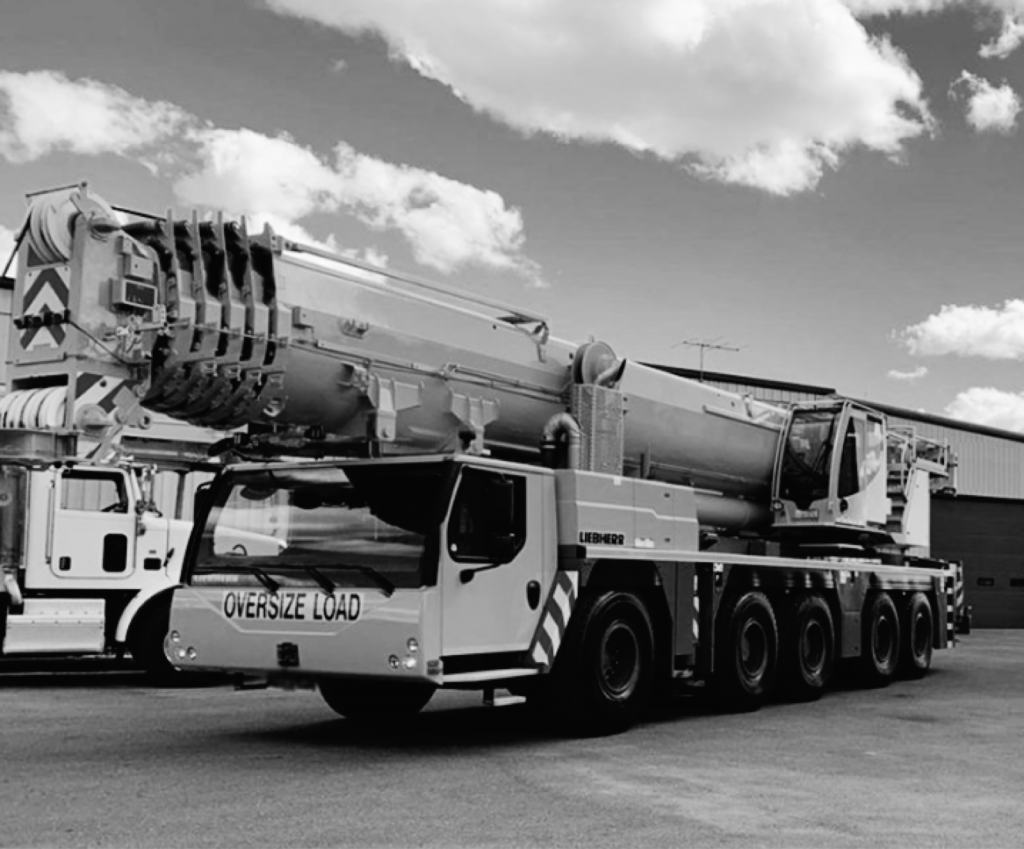
Have you ever wondered how we are able to build skyscrapers and tall structures around the world? How we move heavy loads that would be impossible to move manually? We use cranes! Cranes have been part of the construction process since its invention in Ancient Greece, with traces back to as early as 515 BC.
Each construction job is different and has unique requirements. These days, we have many different types of cranes available to assist different types of jobs: crawler, mobile, tower crane, rough-terrain crane, off-shore crane and many more. Each type of crane is beneficial for performing different jobs. Equipped with cables and pulleys, a crane can lift and lower loads that would not be possible by humans and are often used in areas that are considered dangerous. Cranes can lift such heavy loads as the load weight is compensated by the counterweight of the crane, which provides it with the stabilization needed to manoeuvre its load.
Mobile Cranes
Mobile cranes are the most common and versatile type of crane used in the construction industry today. A mobile crane consists of a lattice truss or telescopic boom that is mounted to a mobile platform which makes this type of crane so versatile, as it allows the user to get into difficult areas that are needed to hoist materials. The majority of cranes today use hydraulic cylinders to extend and retract the boom. These cranes are convenient as they have minimal set up and do not require any additional or special equipment to get the crane to the site. However, they do have 4 outriggers that extend on either side of the truck down to the ground, helping to distribute the weight of the load and relieving some of the weight from the truck.
Mobile cranes that have a lattice boom are very strong and rigid and are relatively light. The boom and its pendants form a triangular shape, with the boom being a compression member, and the pendants being tension members. Due to this, the length of the boom can be increased significantly with minimal effect on the capacity for the added weight.
On the other hand, mobile cranes with a telescopic boom carry their load as flexible, cantilevered box beams resulting in extremely strong supports with a high lift capacity when they are in an almost vertical suspension. However, at low angles, the telescopic boom’s capacity is reduced significantly due to the minimal bending capacity, which can sometimes lead to overturning due to the dead weight. One advantage of using a telescopic boom crane is the rapid set-up time. They can extend to full length in a matter of minutes and be put straight to work on your project.
Crawler Cranes
Crawler cranes are slightly different to mobile cranes, as they are mounted on an undercarriage with a set of tracks or crawlers, which help to provide stability and mobility, especially on uneven surfaces. Opposite to mobile cranes, crawler cranes do not have any outriggers due to the superior stability provided from the base which allows them to move freely around worksites and perform lifts with minimal setup. They come in a wide range of lifting capacities and make easy work of some of the trickiest lifting jobs.
Crawler cranes are a popular choice on many sites as they are suitable for various lifting applications, such as moving building materials and heavy-duty foundation work. Due to the stability provided from the base, crawler cranes are able to travel with load. Some crawler cranes have an attached telescopic arm that allows it to change its size easily to suit different jobs. Due to the cranes being on tracks, this allows the weight to be evenly distributed across a wider surface area, proving them to be compliant on many terrains.

Tower Cranes
Tower cranes are more commonly used on metropolitan construction sites, as the machine is anchored to the ground via a concrete pad and is not able to move freely. Due to the base of the crane being stabilised, this provides these machines with optimal height and lift capacity. Some of the largest tower cranes are able to lift up to 1,000 metres high and are often used in the construction of high-rise buildings along our city’s skylines.
Tower cranes are made up of a few basic parts: the base, the mast, the slewing unit, the horizontal jib, the machinery arm and the operator’s cab. The mast is connected to the base, and this gives the crane its height. The mast can move up and down to suit the height of the building as it gets taller. Attached to the top of the mast is the slewing unit, which contains the gear and motor allowing the crane to rotate. The horizontal jib is the section of the crane that carries the load, which has a cart that runs along it allowing the load to move from the cranes centre. The shorter horizontal machinery arm contains the cranes motors and electronics, as well as the large concrete counterweights used to stabilize the crane, preventing it from falling when moving the heavy loads. Finally, the operators cab is where the operator controls the crane from.

Rough Terrain Cranes
Rough terrain cranes are used for pick and carry operations on rough terrains and off-road areas. The structure of these cranes is similar to crawler cranes, however instead of tracks, they are fitted with large rubber tyres to assist in the tough ground conditions. Similarly to mobile cranes, they come with telescopic booms and outriggers to help improve mobility in rough areas and increase stability.
Offshore Cranes
Today, offshore is one of the most innovative and technologically demanding industry segments. The constant increase in worldwide energy demands and the development of ever more demanding sea beds go hand-in-hand with the advancement of off-shore crane technology. These demands have led to considerable changes in the requirements and possibilities of offshore cranes. Varying in size, off-shore cranes, unlike mobile or crawler cranes are usually installed on large accommodation vessels/barges, semi-submersible rigs, pipelay barges, windfarm construction, jack-ups and support vessels.

Here at Omnia Machinery we have a wide selection of quality used cranes for sale, ready to be put to work on your upcoming projects. We offer mobile, crawler and off-shore cranes from a selection of leading manufacturers such as Liebherr, Grove, Tadano Faun, Terex Demag and more. We will ensure that the specification of the machine matches up to the project it is required for.
Before shipment, we always ensure that our cranes are up-to-date and are fully tested. Should you require something more specialist, please contact us and our expert team will aim to source the machine required for your project.



